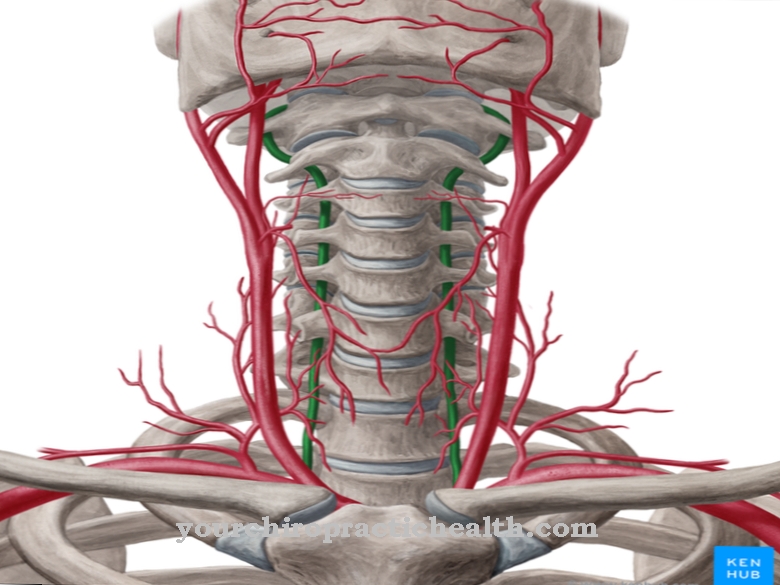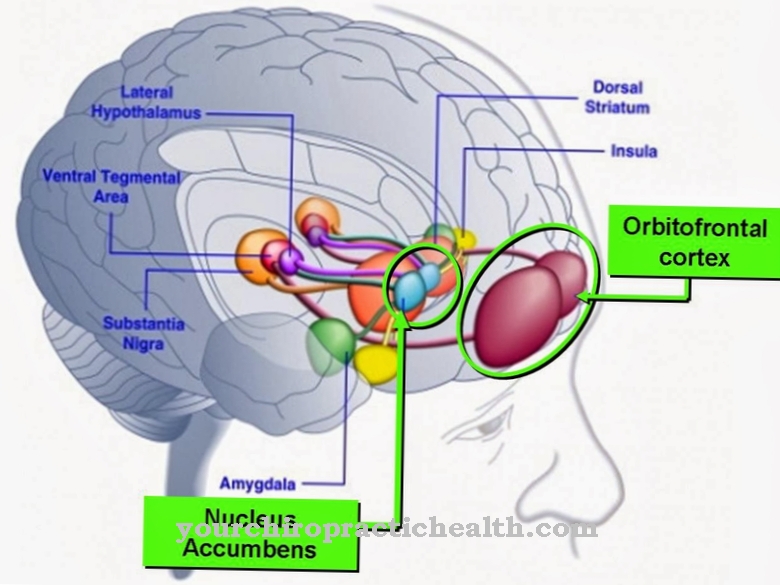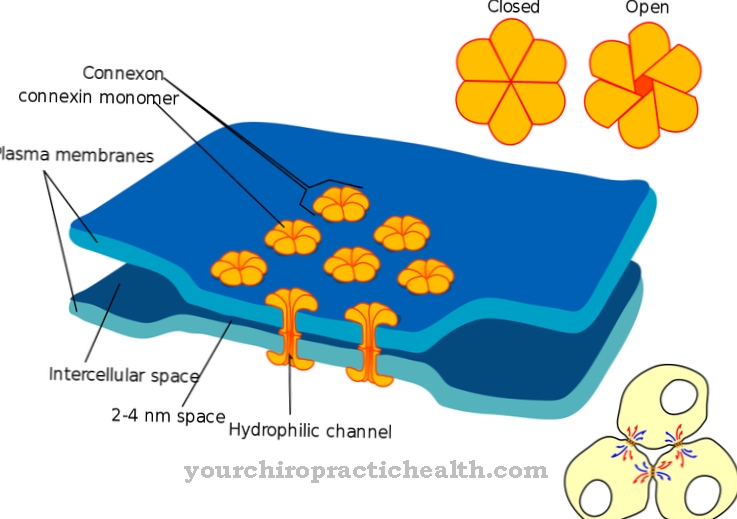The Falx cerebri separates the two hemispheres in the cerebrum. It is a crescent-shaped membrane. It consists of hard meninges.
What is the falx cerebri?
The falx cerebri is assigned to the central nervous system and is located inside the skull. The cerebrum consists of two halves. These are also called hemispheres or hemisphere cerebri. The two hemispheres are not constructed identically.
They take on different tasks in processing information from different stimuli. The cerebral hemispheres are separated by the fissura longitudinalis cerebri. This contains the dura mater and the falx cerebri. The falx cerebri is a membrane that sits between the upper sections of the right and left hemispheres of the brain. It also has the task of separating the two hemispheres from one another.
Their course is from front to back. The cerebral hemispheres are separated by connective tissue. It takes up most of the dura mater. This is tough meninges. The falx cerebri looks like a sickle. For this reason it is also known as a cerebral sickle. It is located below the top of the skull. In some places it has small gaps that are supposed to equalize pressure when there is swelling in the brain.
Anatomy & structure
If the skull is opened laterally, the anterior, middle and posterior cranial fossa can be seen. The falx cerebri extends over the entire area. It fills the skull in the shape of a sickle from the forehead area over the top of the skull to the back of the head. In the first third, i.e. between the forehead and the middle of the head, the falx cerebri has several gaps. These are of different sizes and numbers for each individual.
The fissura longitudinalis cerebri divides the cerebrum into its two cerebral halves as the telencephalon. In the fissura longitudinalis there is a protuberance of the dura mater. The dura mater is the outer meninges. This is very tough and fuses with the periosteum in the skull area. The dura mater separates the brain from the skull. Visually it looks like the dura mater almost completely envelops the brain. The protuberance in the dura mater is the falx cerebri. This is an equally strong connective tissue that is pushed between the two hemispheres by the dura mater. The corpus callosum lies under the falx cerebri.
Function & tasks
The main task of the falx cerebri is to separate the right from the left cerebral hemisphere. The work of the hemispheres is divided into the initial processing of the stimuli and takes place separately from each other. The left side takes on activities such as analyzing and speaking.
The right hemisphere processes the stimuli of spatial perception and music. As a result, the two halves of the brain are differently specialized and information that is perceived, for example, on the left half of the body, is identified and evaluated in the right. The division of tasks means that a lot of information has to travel a long way and runs crossed in the brain. The advantage, however, is that incoming stimuli can be processed quickly and effectively due to the specialization of the individual systems. The brain works on the ventral and dorsal principle. It does not localize what has been received, but where the stimulus arrives in the brain.
This system ensures that information processing can take place very quickly. To ensure this, it must be ensured that the halves of the brain remain separate from one another during the process of initial stimulus processing and do not grow together or fuse. This takes place via the membrane of the falx cerebri. In a later stage of stimulus processing, the information from both cerebral hemispheres is evaluated via the bar. At this point the two hemispheres communicate with each other. This is the only way to ensure that information that is perceived, for example, in the left field of vision and processed in the right hemisphere can also lead to sufficient information processing including reactions.
You can find your medication here
➔ Medicines against memory disorders and forgetfulnessDiseases
If the brain swells as a result of accidents, surgery, inflammation, or if there is a lack of oxygen, pressure in the brain occurs. Due to the given shape of the skull and the hard shell of the skull, the swelling cannot escape. This leads to damage to individual brain areas and thus to an impairment of the functionality of these areas.
The swollen brain mass causes parts of the brain to become pinched. This means that they are no longer adequately supplied and can no longer carry out their tasks. This can lead to impaired consciousness or loss of consciousness. Received stimuli can no longer be sufficiently perceived or processed. This can affect any sensory system. The existing gaps in the front area of the flax cerebri can have a dampening effect on brain swelling, but only to a very small extent. They have a balancing function that can compensate for small swellings for a limited time.
Circulatory disorders in the dura mater affect its functionality. If it is restricted, it can no longer be guaranteed that the falx cerebri will remain between the hemispheres. In addition, there may be further bleeding or bleeding caused by congestion with central nervous consequences. The failure of the falx cerebri means that the skull capsule is no longer sufficiently mechanically stabilized from the inside. This is what the cranial sickle essentially serves.
Various diseases of the meninges also influence the functional activity of the falx cerebri.



























